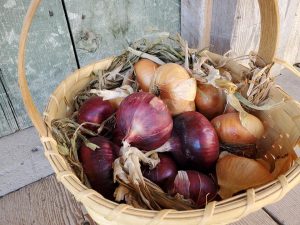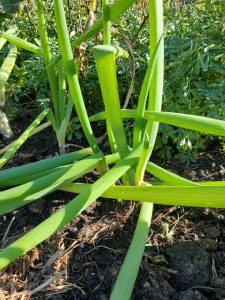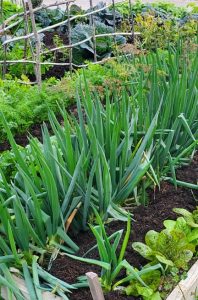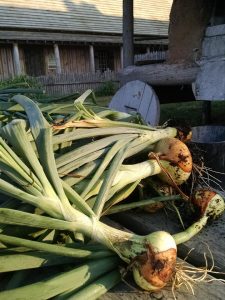



Onions first appear in the journal on April 29, 1774, when Askin “planted onions for seed.” This is one of the only places in the historic record that we see someone at Michilimackinac specifically growing plants for seed. Growing your own seed is an investment in the future, and this entry reveals that Askin had no intention of stopping his gardening activities any time soon.
The actual practice of growing your own seed was well-known to 18th century gardeners. Many garden writers of the time believed that seed grown in North America would deteriorate after a few years and preferred to get their seeds from European sources. By the 1770s, seed companies were selling paper packets that most gardeners would be familiar with today. Customers wrote a letter to request seeds and they were sent along accordingly. Onion seed could be a little tricky to source from so far away. The seed itself is less likely to sprout after a year and transportation from Europe could be slow.
The next day, April 30, Askin noted that he “sowed onion seed.” These seeds may very well have come from a previous years’ stock or could possibly have been purchased. In any case, gardening manuals recommended that the seeds be planted with plenty of space between the rows in open soil. If he were following the common practice, Askin would have also been very, very careful about keeping the tiny onions weeded once they came up. Newly sprouted plants are very fragile, and onions have shallow roots that can easily be damaged by disturbing the soil around them. Because of this, most garden manuals dramatically warned against allowing weeds to get into the onion patch and recommended regular and diligent weeding.

We do not know how Askin’s 1774 crop turned out, but in early May of 1775 he “sowed parsley, beets, Onions, lettice and Barley seeds.” Surprisingly, the very next day brought “Cold Weather frost and Snow more than Common at this Season.” That sort of weather was obviously not ideal for a newly-planted spring garden. Onions are generally cold hardy plants and can be set out relatively early in the season, but do need warmer soil temperatures to germinate. The cold weather likely set the garden back a little.
Aside from John Askin, we know other people in Canada were also growing onions and liked eating them fairly often. Travelers like Pehr Kalm mention them being grown and eaten in 1740s Canada, so much so that he could smell the scent of onion clinging to the clothing of people as they passed him on the street. The vegetable was also commonly found in gardens in the English colonies, and onions were one of the first garden vegetables cultivated regularly by the British in North America.
Onions are valued for being easy to grow and having a wide range of uses in the kitchen. Today at Michilimackinac we are lucky to have sources like John Askin’s journal to inform us about the tasty vegetables that the fur traders and merchants were gardening with in the 18th century. Stop by and see how they are growing at Colonial Michilimackinac next summer. Our onions (and the rest of the Michilimackinac gardens) are made possible in part through the generosity of Mackinac Associates– if you’ve ever admired our historic gardens, consider joining the Associates!









